It's probably a good time to make changes in your home because a lot of the questions you've been getting lately are about freshening up your furniture or even about their transformation. That's what the question that is the subject of this article is about, only it's more specific, the furniture has to look a certain way, shabby chic to be precise. This means that, as well as painting, ageing techniques are needed to make the furniture look old and worn. If done well, such pieces can personalize a space and make it even more enjoyable.
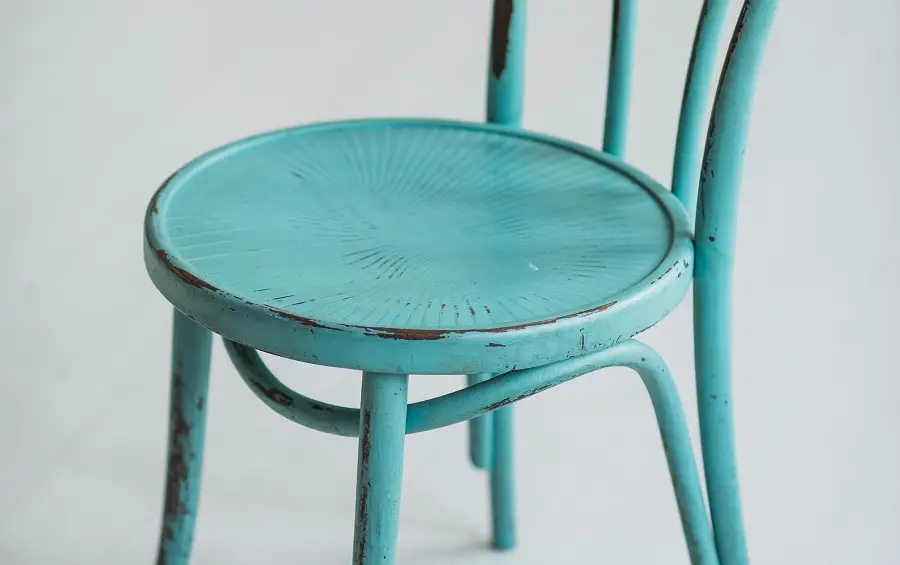
What is characteristic of shabby chic style
Shabby chic is a style of interior design where old or seemingly old pieces of furniture and decorations are used. It originated in the UK as a reproduction of the country style in city homes. The term was first used in the London magazine The World of Interiorsin the 1980s, and it also spread to the USA. Gradually the style was enriched with elements from the Provençal countryside (lavender bouquets), Greek (olives, olive leaves) or Italian (grapes and vine leaves, lemons).
Shabby chic furniture is simple, functional and looks well worn. When I say simple I don't mean minimalist, but furniture used in a rural environment where the lines are warm and every piece has utility. Being a rural-inspired style, the furniture can be embellished with paintings representing bouquets of flowers, garlands or various symbols or images. It is painted, the wood is rarely visible, and the colors are pastel and without sheen. In a shabby chic decor, sofas and chairs are covered with decorative cushions, floral-printed curtains, tie strings and decorative objects from times gone by.
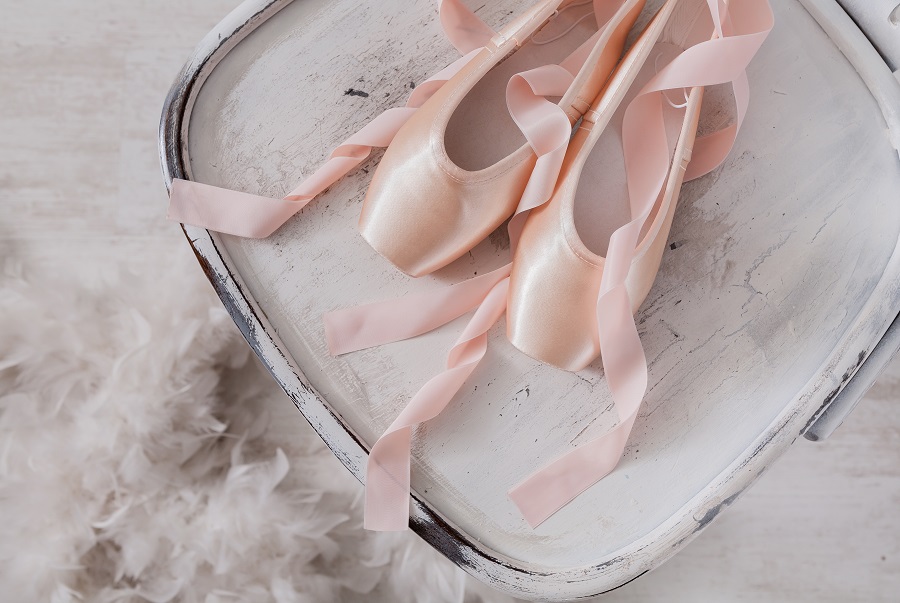
How to transform furniture
The main feature of artificially aged furniture is the edges that look worn and worn from long use. Depending on your wishes and the beautiful To each one, the edges can be discreetly faded or, on the contrary, the passage of time is suggested by large areas where the new paint has worn away and left the old paint underneath. Whatever pattern you choose, the final piece should look natural and natural, nothing should be overdone. I must admit that such transformations require talent and sometimes inspiration. I recommend searching online for shabby chic pieces before you start the transformation.
In the video below you can see how to sand the edges. The rounded ends are sanded by following the profile and lightly insisting because those are the areas where the furniture is naturally dull. The sanding is done unevenly because in normal use the same happens. Always keep in mind the truth and naturalness of the object.
The old look is also given by a surface that doesn't look perfectly clean. Patinas or, even simpler, dark waxes are used to achieve this effect. Applied over the entire surface and then wiped off, it leaves a discreet, uneven coloration that suggests an old piece. Note that nothing other than wax can be applied over aged furniture. If you want a tougher surface because the furniture will be used in high humidity environments, then you will need to use varnish as a top coat. In this case ageing patinas will be used. You can find them at DIY stores or wood varnish and paint distributors. The latter option is preferable because such places usually have specialists who can give you advice and information.
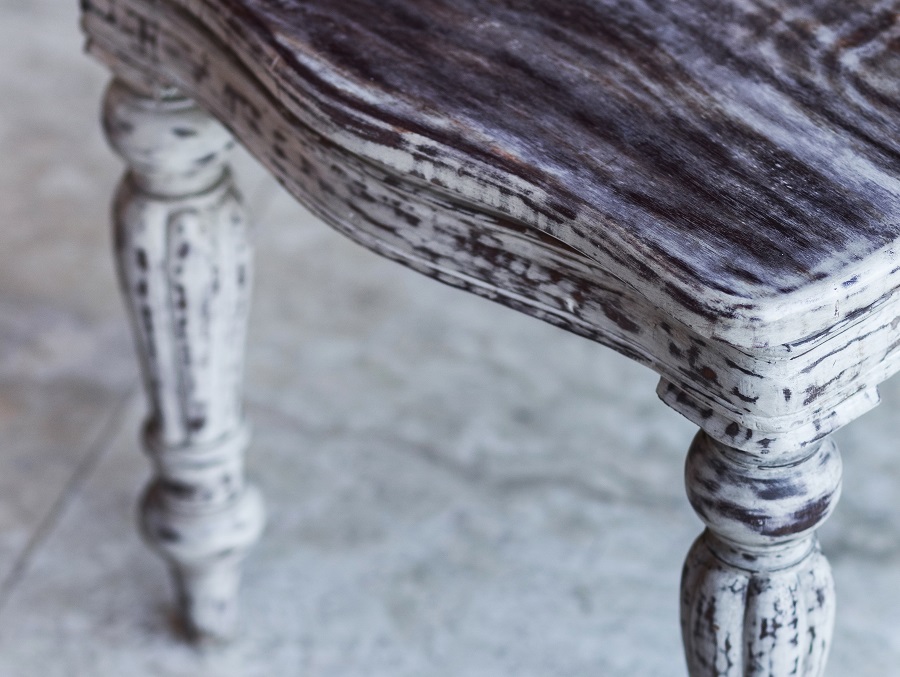
Ageing techniques
There are several techniques to achieve an aged object. They all rely on overlapping paints, patinas and sometimes materials that can create special effects. An interesting special effect is cracking. There is a material that can be applied from place to place and the paint applied on top will crack as it dries. Followed by waxing with a dark wax, will result in a very truthful paint aging effect.
Before starting the transformation, the piece of furniture must be thoroughly cleaned and degreased. Ironic, isn't it? We remove the accumulated dirt and then go to the trouble of creating an artificial one. But the effect we're trying to achieve is different, and materials won't grip if the surface isn't clean. Here's how to clean an object to be repainted here. We also need to prepare the place where we will work and the materials we need. I've described some Painting and varnishing tips and about chalky paints, which are worth checking out if you're a beginner to prepare yourself properly before you start the transformation.
The easiest way is to use a light-colored paint, preferably cream, beige or beige, which is applied over a dark piece of furniture. It's best to use a regular water-based paint or a creamy one like Annie Sloanfor example. With regular paint you will need to sand the surface of the furniture beforehand to ensure adhesion. With Annie Sloan paint, no sanding is necessary, even if the furniture is glossy, but it is compulsory to fix the paint with wax because otherwise it has no resistance. Apply with a brush in 2 coats to completely cover the old coat. After drying sand the edges up to the old coat, as in the above video. You can leave it like this (if the paint is regular) or apply a colored wax as a patina. To remove the wax more easily, apply it over a thin layer of colorless wax.
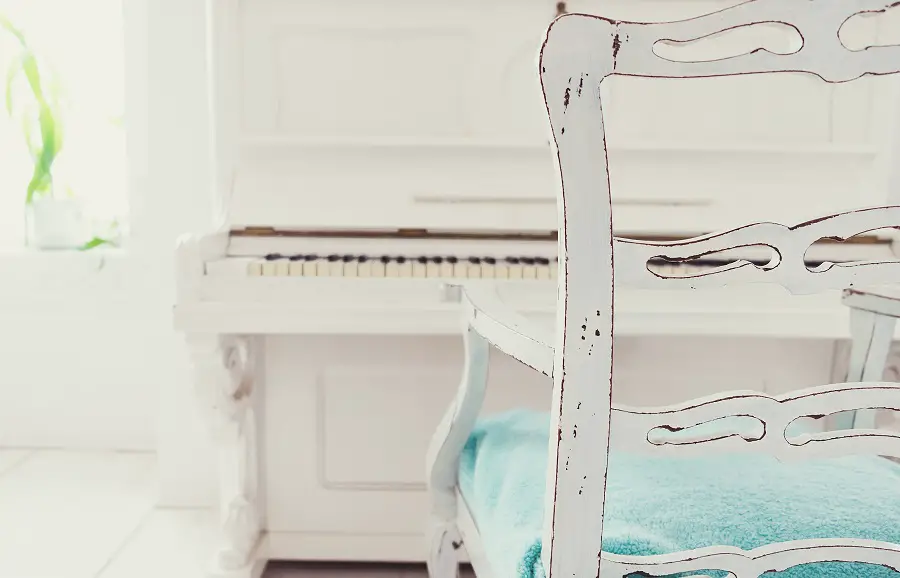
Another method is to apply several successive coats of different colors. In this case more aggressive colors such as red, blue, green can be used. Apply a thin coat with a brush, let it dry and then the next. This is very much a matter of inspiration, because the layers may not be applied all over the surface, there may be only a few strokes here and there, and the brush mark may remain visible. The last paint applied is the dominant paint that will give the final look. After drying, sand the edges and the surface from place to place, differentially, leaving as many colors as possible visible. Here too, you can apply dark wax, colorless wax or patina and colorless (water-based) varnish if the furniture is used in the bathroom or kitchen.
The use of the cream paint allows you to highlight hidden layers without sanding. After applying successive layers of paint, spray the entire surface with vinegar. The vinegar will attack the chalk layer and dissolve it. Being only sprayed, it will not be enough to destroy the whole layer but only here and there. The spraying is done differently so that some areas are more attacked than others. After drying, apply wax for fixing. Use ordinary vinegar and test beforehand to check the effect. This technique only works with chalky paints, vinegar does not attack regular paints.
I think you've got a good idea of what artificial aging, shabby chic or patination means. If you have done such transformations, tell us what method you used. It would be interesting to learn new techniques, share experiences. And if you have any queries or questions, leave them below in the dedicated space. I will definitely reply.
Good luck!






























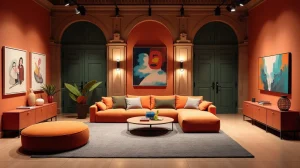





Very nice and informative article, thank you. The aspect of aging is a very broad field in which we encounter multiple techniques and a very wide palette of expression. Besides chalky paints, which have a much more absorbent surface, patination is much easier on vinyl emulsion type paints, Vitex Classic for example or Dulux latex type, Benjamin Moore, etc. on which you can build different textures, cracking effects or glued applications. On this kind of surfaces I work in general, surfaces on which different effects can be applied easily with acrylic paints wiped with a sponge, dabbed with a brush or tufted with a rag soaked in colour. I would conclude that the technique chosen is determined by the desired final appearance. Sometimes a ball of wire from the kitchen or sanding paper helps to sand the various effects. One of the basic characteristics of the ageing effect is COLOUR, used in different shades, here I mean white, ochre, orange, brown, dark brown and black. The deterioration effect is the physical one, the colour effect is the one that keeps the appearance. The right choice of colours helps at least 50% to make the project a successful one, the rest makes the damaged texture created on surfaces and edges. Good luck to all in future projects
Thank you for the additions, they are very welcome. Especially when they come from a specialist. 🙂
The field of wood and furniture antiquing is indeed vast, and enthusiasts appreciate any advice or guidance.
All the best!